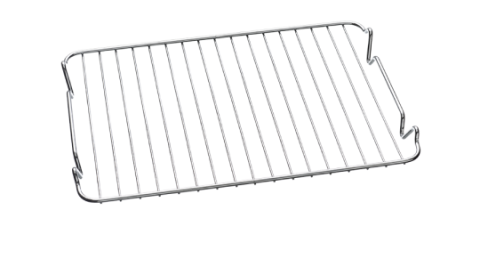Troubleshoot
- Power is switched off >>> Check whether there is power supplied. Also check that other kitchen appliances are working.
- Oven temperature control is incorrectly set / Oven door has been left open >>> Check that the oven temperature control knob is set correctly.
- Lamp has failed >>> Replace lamp according to the instructions.
- Electrical supply is disconnected or switched off >>> Make sure the electrical supply is switched on at the wall socket outlet.
- Oven shelves are incorrectly positioned >>> Check that the recommended temperatures and shelf positions are being used. Do not frequently open the door unless you are cooking things that need to be turned. If you open the door often, the interior temperature will be lower and this may affect the results of your cooking.
- There is foreign matter caught between the timer buttons >>> Remove the foreign matter and try again.
- Touch model: there is moisture on the control panel >>> Remove the moisture and try again.
- The key lock function is set >>> Check whether the key lock function is set.
- Oven shelves are vibrating >>> Check that the oven is level. Check that the shelves and any bake ware are not vibrating or in contact with the oven back panel.
Not all of our appliances can be converted – refer to Conversion Guide in your user manual for full details.
Our appliance hinges can NOT be changed.
No, aluminium foil should not be used to cover the grill pan or on any of the shelves in the oven as this will create a fire hazard. Aluminium foil should never placed on the base of the oven.
Belling 54 and 60 cm upright cookers, as well as our wall/ under bench ovens are front venting and therefore either when the oven is in use or switched off and cooling down, warm air will be expelled through the front vents by the rear cooling fans.
Protective oils / agents are used in manufacture and will be burned off when your appliance is first used. This is normal. Please refer to your user manual for further information regarding this process.
As a safety feature the door locks during the pyrolytic function, once the program is completed and the oven has cooled down the door can then be opened.
The timer bell has three tones to choose from; press the minus button to listen to the first tone; Release the minus button and press it again to listen to the second tone etc. Releasing the minus button after the tone has sounded will automatically select that tone.
All Belling ovens have cooling fans at the rear of the appliance to assist in keeping the exterior of the oven cool. If you hear a fan running it normal as this fan will run for up to 20 minutes after the oven has been used, depending on what temperature had been used.
If an appliance does not have an inner door glass in the top door, this is because the appliance is a twin cavity appliance incorporating a single oven with grill. Grill doors do not have inner door glasses.
The gap allows airflow between the inner and outer door panels. The flow of air prevents the outer door panel from becoming too hot. Because of the gap, spillage and condensation can form inside the door, so we also provide a facility to clean between these panels.
- One of the main by-products of burning natural gas is the production of water vapour. Therefore steam and condensation forming between the oven door glasses is not necessarily a sign that the oven is not working correctly.
- Use a covered container, where practical to reduce the amount of condensation that forms and not to leave food in the oven to cool after it has been cooked and the oven has been switched off.
Although it is a rare occurrence, oven glass can shatter unexpectedly. There are many possible reasons why the toughened glass in an oven door might shatter, but it’s often tricky to pin down exactly why it’s happened. This is partly because the glass failure may happen a long time after the initial damage. A knock, scratch or strain put on the door may cause a chip, or hairline fracture. Over time, changes in temperature can weaken the glass and eventually lead to it shattering or exploding.
Possible causes
Damage in transit – A stray bump or knock in the warehouse or during delivery.
Installation – Using the door handle to lift the oven into place or rough handling.
Cleaning – A scourer can leave tiny scratches in oven glass. It is best to use a soft cloth or sponge and clean regularly to avoid stains baking on.
Slamming the door – Avoid slamming the door, kicking it closed with your foot or letting it hit the metal shelves as it closes.
Accident – Maybe something hit the door or a hot dish was placed on the open door. It may be something not realised at the time and forgotten further down the track when the glass shatters.
If your oven has a loose handle the oven glass can shatter - book a service call.

